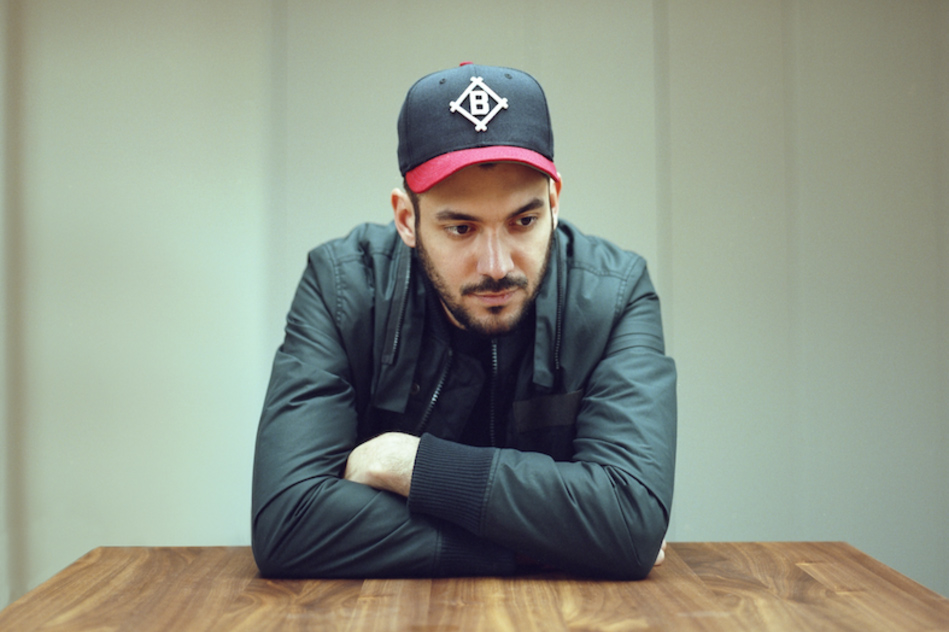
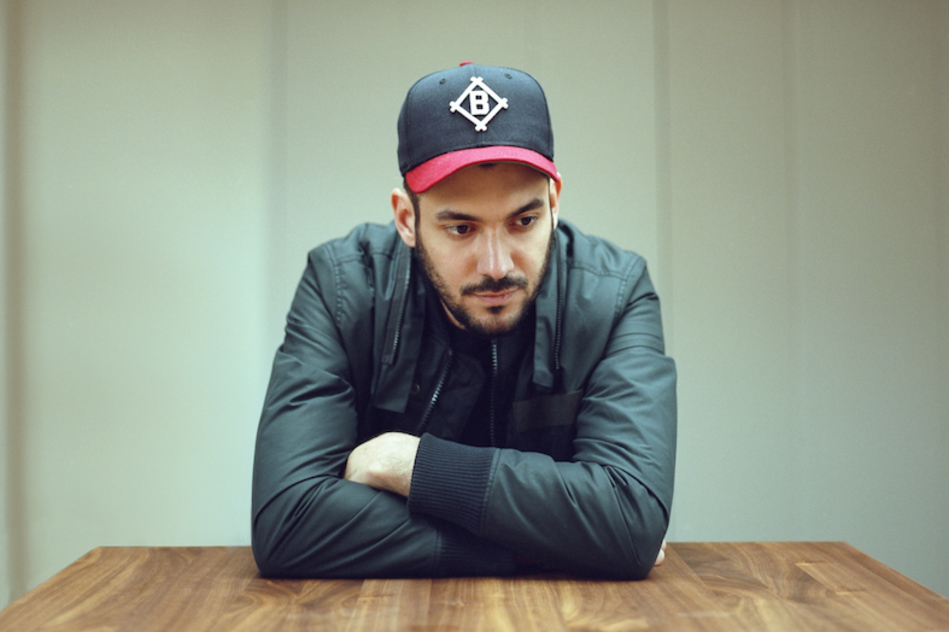
Make no bones about it; from humble beginnings in the north of England, designer Aitor Throup has everybody from Umbro to Kasabian clamouring to work with him
Originally printed in Protein Journal Issue #15
“My earliest fashion memory was Tim Burton’s Batman mask for Michael Keaton,” recalls Aitor Throup, the multi-disciplinary, London-based artist-slash-designer. “I remember being overwhelmed by how his facial features had been exaggerated and captured in this mask.” The image of the iconic mask emerging from Bruce Wayne’s Bat-closet had a profound effect on the young Throup, and instilled in him the belief that what lies beneath the surface of an idea is just as important as what’s immediately visible. He describes a recurring dream he had as a child. “I was at sea, I was in the ocean. I don’t know where I was but I could see a box and I knew the Batman mask was inside this box and it was floating away from me,” he says. “All I wanted was to have it, to understand it, for it to be in my grasp.” When you look at the common themes running through his work, both in what he makes and in how he makes it, it doesn’t take Freud to pinpoint the connections between this dream and Throup’s focus as an artist today.
A brief glance at his body of work and this influence becomes apparent in a quite literal form, given the motifs of skeletal structures and human anatomy that constantly crop up in his work. Examples include his inverted skull backpack – inspired by the fears of suicide bombings that arose in the wake of 9/11 and the terrorist attacks in London – and his computer-generated video for Damon Albarn’s single Everyday Robots, where the singer’s head is slowly constructed, layer by layer, over the course of the song. This theme of layering and structure has been present in almost all the Argentine creator’s work since he completed his MA in menswear at London’s Royal College of Art nearly 10 years ago.
It’s understandable that, with his roots planted firmly in menswear, his fashion work is responsible for a hefty portion of the attention he receives. For example, Throup’s graduate collection, When Football Hooligans Become Hindu Gods, saw him combining match-day fashion with Hindu symbolism, and displayed the influences of brands he’d later go on to work with. “You know, Stone Island, CP Company, I was surrounded by that growing up,” he says. However he’s reluctant to solely define himself as a fashion designer. “I sit somewhere between an artist and a designer,” he states.
His portfolio of work that ranges from capsule menswear collections to set designs for live music performances to creative consulting for entire brands, it quickly becomes apparent why categorising him is not easy. “Artists propose problems. They pose something to the viewer and the viewer is able to fill in the gaps, but designers solve problems, so the artist is posing it and the designer is solving it. I suppose I do both.” What are the problems he’s looking to solve? “From the get-go, I was genuinely interested in defining newness,” he says. It could certainly be argued that creating something new is the goal of almost every artist, but for Throup, the new has far greater value. There’s a lot more to it than repackaging existing ideas. “I think that for something to be new it can’t have been pre-imagined by us, because that would be a contradiction.”
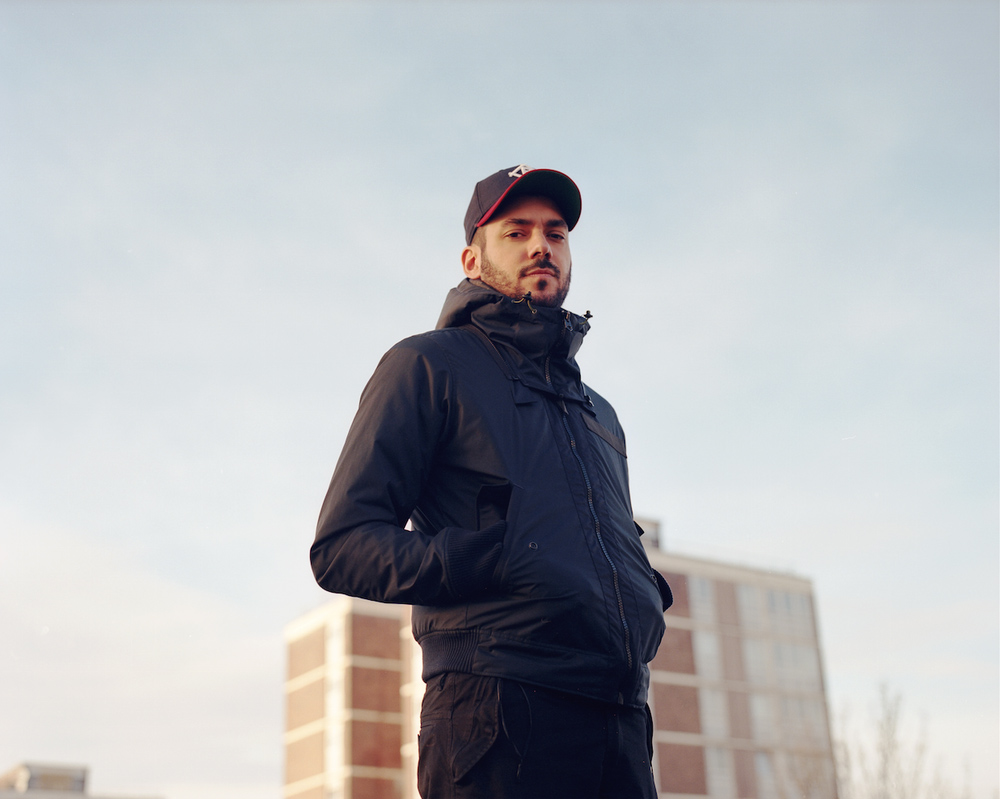
It seems that to achieve genuine newness is no easy task, and requires the total abandonment of preconceived ideas and familiar reference points. “The clearest example I can think of in my own work of achieving this, truly creating something that doesn’t merely recreate, but, rather, borrows from an existing point of reference to create a new one, is when I did the Funeral of New Orleans,” he says. To commemorate not just the tragic loss of life but also the loss of culture that occurred when Hurricane Katrina struck New Orleans in 2005, Throup set about completely redesigning the suits traditionally worn by marching jazz bands. “The image of the black male in a black suit with a white shirt and a black tie, a military hat, and a brass instrument, is so powerful in terms of what it represents.”
To completely reinvent this, Throup examined and dissected the levels of functionality present in the existing outfits. “These suits are supposed to be worn when playing a saxophone or whatever instrument, but they’re constructed in this shape which the musician will only be in about 1% of the time.” That is to say, playing an instrument, whether it’s a saxophone, trombone or violin, requires the musician to repeatedly adopt a pose that is not catered to by the existing uniform. To combat this, Aitor created five distinct outfits that met the needs of each individual band member. For example, the trumpet player’s outfit comes with protective components attached to the neck and shoulders that, when disassembled, can be rebuilt into an attachable case designed to hold and protect that instrument.
When he began this project, Throup had no idea of what the final product would look like. “That’s as close as I can get to explaining the importance of a product design practice in an art context, using product design as a tool of communication to achieve true newness, but not just for the sake of being new,” he says. “It’s for the sake of capturing a message within a product.” Essentially his designs have a higher priority than simply to look good. Scratch the surface and beneath you find layers of meaning and substance, something Throup describes as “giving objects a soul.” When you create something truly new, arguably it's thought-provoking because it's rejecting the opportunity to connect with things that the general public already value as being tasteful
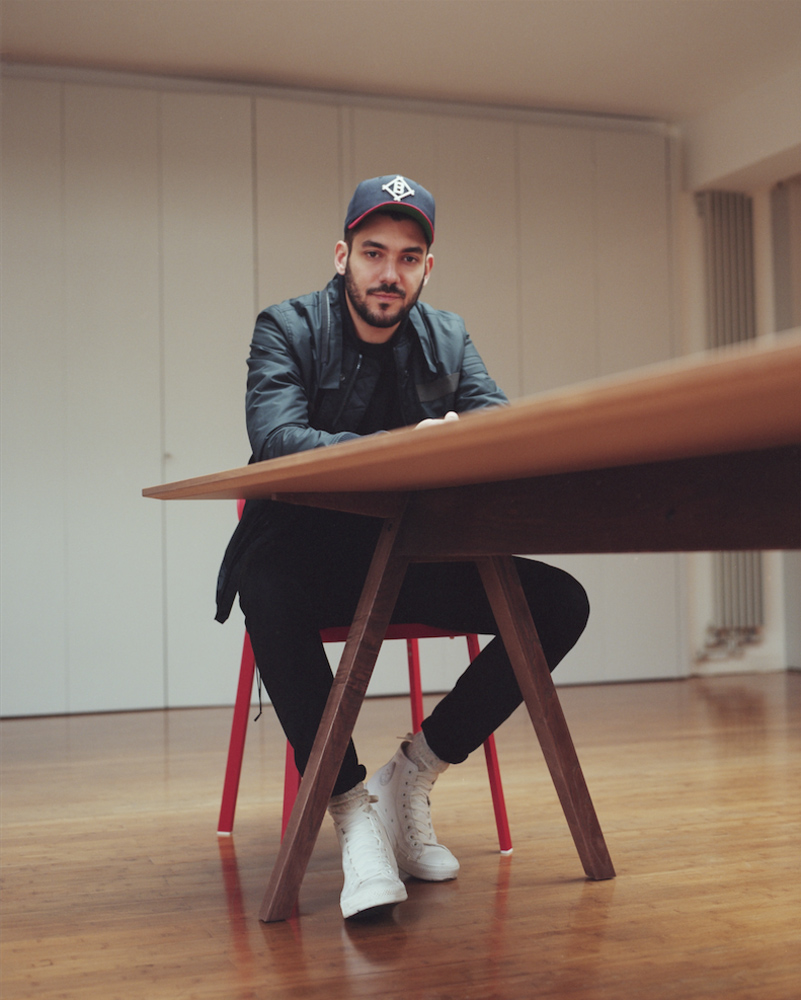
“If you just create something that’s stylistically relevant or fresh or seems cool or whatever, you’re just putting yourself out there to be judged on your aesthetics or style,” he explains. “But when you create something truly new, arguably it’s thought-provoking because it’s rejecting the opportunity to connect with things that the general public already value as being tasteful.” For Throup, creating something new is not done for novelty’s sake. “I feel a lot of creation is there to build an egotistical shield around the creator, to validate and say ‘Look, I know what’s cool.’” This is a position Throup consciously distances himself from. “I want to take all that away from myself and say, ‘I don’t know what’s cool, I don’t want to pretend I know.’ I just know what has integrity,” he explains. That is to say, to achieve true newness, Throup completely detaches his work from pre-existing forms, and by doing so invites a greater level of interest from the audience on account of the unfamiliarity. “It almost forces you to find the meaning behind it.”
Another important aspect of his creative process is his propensity to challenge and upturn standard conventions of process. He’s constantly asking “Is there another way to do this?” “I think when things became industrialised, a lot of the processes, like blocks and patterns, became standardised, and that standardisation has stopped us evolving creatively.” It could be argued that certain standards, or ways of making things in an artistic or design sense, exist because they’re simply the best way of making something. However, for Throup, improving upon standardisations isn’t so important; what matters is to question them.
The purpose of questioning, he says, “is not to say ‘This is better’, but to awaken and shake us out of conventions, to make us realise that we don’t need to use that Victorian buttonhole or whatever it may be, and maybe that’s not the better solution, but I want to rethink the buttonhole.” This challenging of established, entrenched practices manifests itself across his work in a variety of ways. Throup refuses to release seasonal collections, instead favouring capsule collections that are released when they’re ready. He took an unconventional approach to creatively directing the release of Kasabian’s fourth studio album <Velociraptor!>, a project that saw him bring the band back to its more experimental roots, and create accompanying material that included jewellery and an animated version of the album cover. Throup’s work on Kasabian’s latest album <48:13> involved not only art directing the graphics and first video, but also producing the entire set design for the group’s headline show at last year’s Glastonbury Festival.
You could be forgiven for thinking the way Throup approaches his work with fashion brands would differ wildly from how he works with musicians; however, his creative process follows the same principles for all mediums. “I think how I approach music projects is harder to visualise, but it’s exactly the same,” he says. “I’m interested in the idea of process – giving visualisation to process, so the work you consume visually is directly linked to what you’re consuming sonically.” This visualisation of the process, of valuing each step taken towards the final product, is what Throup means when he talks about “anatomy”; how every layer makes up the whole and each is as important as the next. This is an idea that is sometimes visualised quite literally as the construction of anatomical layers, as seen in his music video for Damon Albarn, for example. “There’s this term in German aesthetic, Gesamtkunstwerk, which is the work as a whole. I could design a building, let’s say, as my piece of art: the architecture of that building and the rooms in that building and even the inside, the position of the windows, the furniture, what’s inside each drawer, and even the music playing in the building. Everything has the same purpose as the external building itself. That’s the complete work.”
It’s this recognition of the whole, coupled with attention to detail, that caught the eye of one of his more recent collaborators: experimental musician and producer Flying Lotus. “He approached me saying he wanted to collaborate on something so I invited him to an exhibition that I was doing in LA,” says Throup. “He said to me, ‘Your work is what my music looks like,’ and I said, ‘Wow, I’ve always said your music is what my work sounds like!’” The two began a collaboration that is still ongoing, and so far has produced a number of projects, including a film made for the relaunch of the Nowness video channel starring Noomi Rapace and, most notably, a skull headdress called the Death Veil Mask that Flying Lotus wore for his biggest show in London in November last year. The mask has since become part of his on-stage persona. The pair seems to be creatively in sync. “We just connected on different stuff like superheroes and shared childhood things,” says Throup.
Unsurprisingly, this focus on creating something people have never seen before has placed Throup in the crosshairs of a number of brands keen to make creative waves and set themselves apart from their competitors. Various labels are eager to put their brand through Throup’s rigorous, unique design process. He has worked with Umbro, redesigning the England football kit in 2009/10 to maximise its athletic function while staying true to its heritage, and has taken on the role of creative consultant for G-Star RAW – a collaboration that gave Throup the opportunity to stretch his multidisciplinary wings and direct G-Star’s entire brand campaign, as well as completely redesigning its flagship store in London. “If you look at all the brands I’ve worked with they stand for something that’s very clear and that they remain very true to,” he observes. It’s perhaps his proficiency at stripping away unnecessary elements and getting to the heart of that message – a message that for many brands can easily become diluted and muddled – and then communicating it in such innovative ways that explains why he’s in such demand. He believes the brands that interest him have similar goals to his own: creating things with genuine substance by challenging and questioning every established practice. The responsibility of the creator, he says, whether artist, designer or musician, is “to break down standardisation.”
With this catalogue of collaborations with high-profile names already under his belt, it’s clear Throup has made a name for himself as a creative powerhouse. His reputation is given further weight by his recent stint designing costumes for the Hunger Games Mockingjay film sequels. With this kind of international, high-profile exposure, the future’s looking positive for the designer. Soon-to-be-revealed developments in his collaboration with G-Star RAW and the next phase of New Object Research, his own clothing products, are also in the pipeline. It looks as though Aitor Throup is showing no signs of giving up his hunt for the new. http://aitorthroup.com
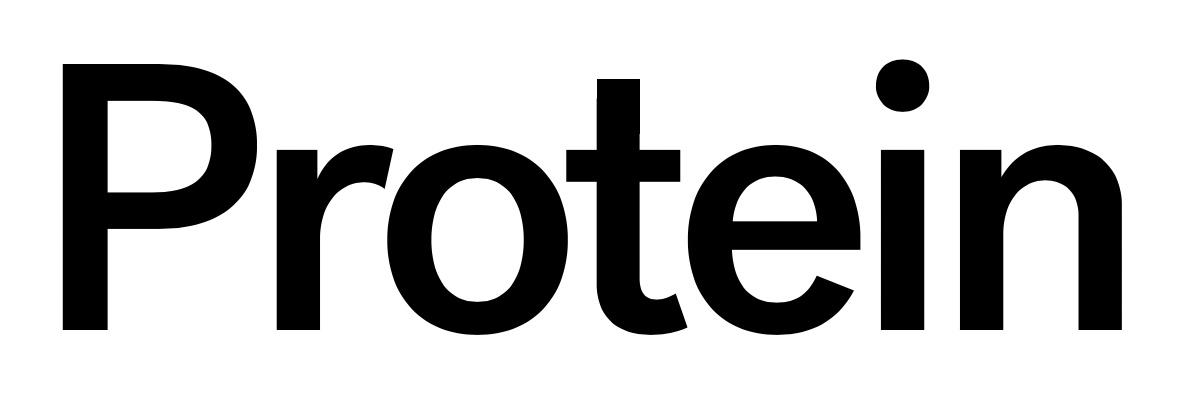

Discussion